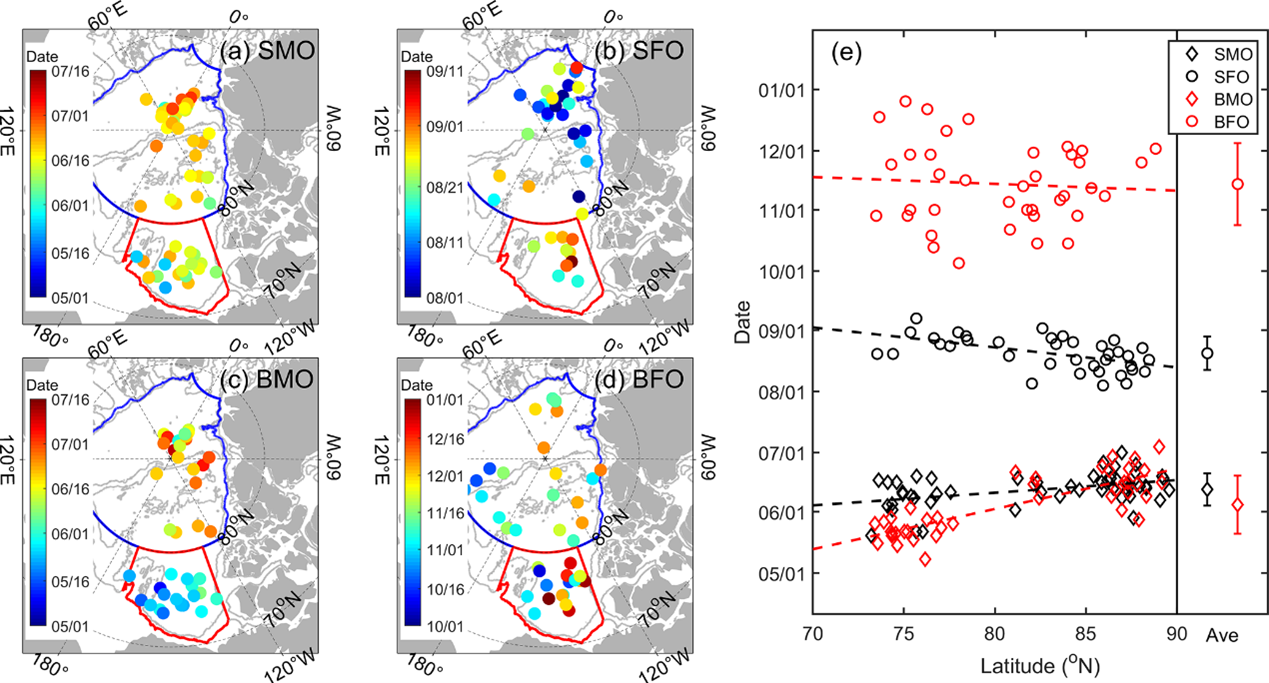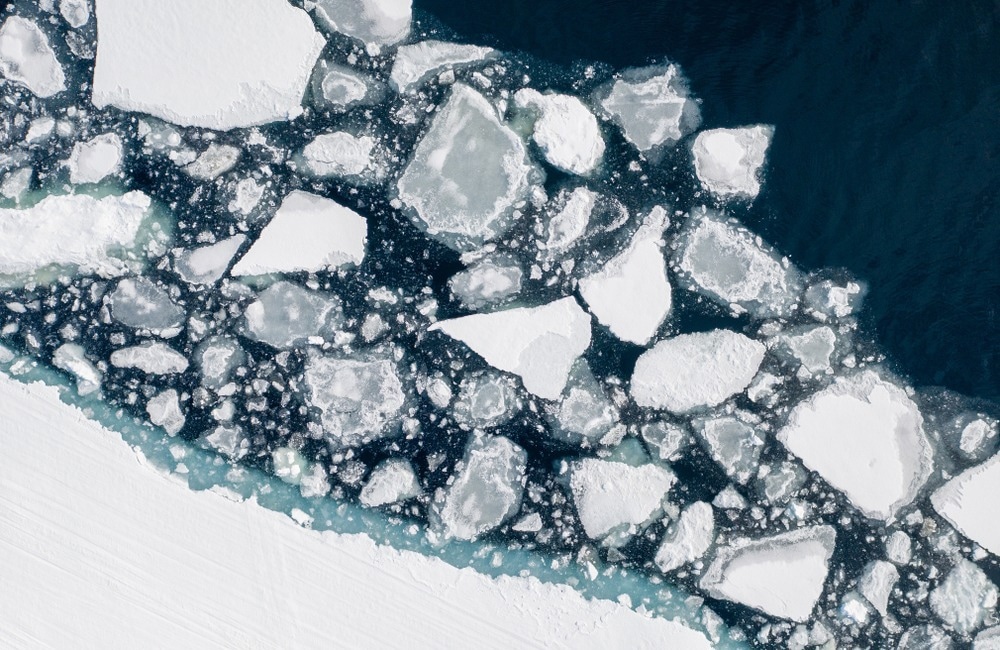Reviewed by Alex SmithDec 6 2022
Years of studies have shown that climate change signals in the Arctic are magnified and that sea ice in this region is susceptible to increases in Arctic warming. The exchanges of heat, momentum, and mass between the atmosphere and the ocean are substantially influenced by sea ice.

Timing of ice surface and bottom melt and freeze onsets of all sites: (a) SMO, (b) SFO, © BMO, and (d) BFO. The color codes (note the different scales for different panels) indicate the respective dates. Grey contours denote the 300 and 2000 m isobaths. (e) Variations in dates of melt and freeze onset as a function of the latitude. Image Credit: European Geosciences Union
As a result, the timing of sea ice melt and freeze occurrences, in addition to the length of the melt and freeze seasons, play an important part in the atmosphere-ice-ocean system’s “heat budget.”
Until recently, most research predicted the Arctic melt and freeze onsets using surface-based remote sensing observations, but few explored the freeze-thaw process at the ice bottom.
 Image Credit: GROGL/Shutterstock.com
Image Credit: GROGL/Shutterstock.com
An international group of researchers synthesized multisource data from 2001 to 2018 in a new study published in the European Geosciences Union journal, The Cryosphere, to investigate the spatiotemporal variability of both surface and basal melt/freeze onsets and reveal the mechanism behind them.
These discoveries may help better comprehend changes in the atmosphere-ice-ocean system, as well as the mass balance of sea ice in the changing Arctic.
Possible Delay in Arctic Sea Ice Loss?
Thinner ice thickness and thinner snow cover favors earlier basal freeze onset. The ocean plays a cross-seasonal role in regulating the growth or decay of sea ice.
Long Lin, Study Lead Author, Polar Research Institute of China
The researchers discovered that the average base freeze initiation of Arctic multiyear ice was nearly three months later than the surface.
Based on synchronous ice and underlying ocean observations, we found the ice basal freeze-up delay relative to the surface, which can be attributed to the regulation of heat capacity of sea ice itself and the oceanic heat release from the ocean mixed layer and subsurface layer.
Long Lin, Study Lead Author, Polar Research Institute of China
According to Lin, even if thinner ice has a longer freezing season, total ice growth cannot compensate for summer sea ice loss.
From another point of view, the self-regulation of the Arctic sea ice-ocean system will delay the loss of Arctic sea ice.
Long Lin, Study Lead Author, Polar Research Institute of China
New Insights into Surface and Bottom Ice Melt Onsets
The study also discovered that the largest significant temporal difference between surface and bottom melt onsets happened in the Beaufort Gyre region, where basal melt onsets occurred more than a half month earlier than surface melt onsets.
Furthermore, both multiyear and first-year ice in this region shows a trend toward earlier basal melt onset, which can be linked to earlier surface ocean warming induced by decreasing sea ice thickness and increased sea ice mobility.
These findings provide the first comprehensive picture of the Arctic sea ice freeze-thaw cycle and its interactions with the atmosphere above and the ocean below. It also emphasizes the significance of synchronous comprehensive monitoring of the air-ice-ocean system, which aids in explaining the physical nature of the coupling process.
In the future, the researchers advocate for more extensive and elaborative ice mass balance studies of various ice types, as well as simultaneous upper ocean water characteristics data. They anticipate that this will greatly increase the understanding of the Arctic ice-ocean system.
Journal Reference:
Lin, L., et al. (2022) Changes in the annual sea ice freeze–thaw cycle in the Arctic Ocean from 2001 to 2018. The Cryosphere. doi.org/10.5194/tc-16-4779-2022.